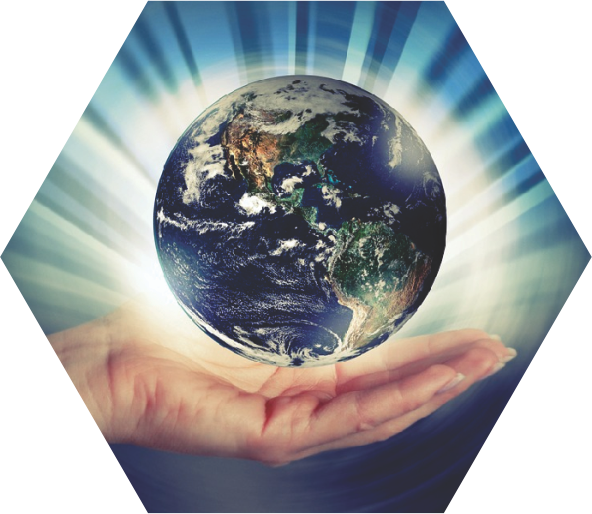WAY FORWARD: TRANSFORMING YOUR BRAND
In the previous section we learnt what it
takes to become a luxury brand and the reason why long-term mindset needs to be
built at entry level itself. Now let's move forward and understand how you can transform
your brand?
ESTABLISH A FRAMEWORK TOWARDS SOCIETAL IMPACT

When it comes to branding and value creation, it should be measured based on the impact on the society at large and NOT only based on financial achievement. This should not undermine the relevance of profits for sustainable growth in any way. However, equal importance should be given to what your brand has done that is beneficial to the society. It could be in the form of social awareness, in the form of strong and ethical brand values, even in the form of your product designs, that sets you apart in the minds of the society, even if they are not your direct customers.
In India, Tata has successfully been the most valuable conglomerate in the country. At that stage, its not about the product that the customers are buying, but they are buying the brand and the experience. Learning from such success stories can take us a long way.
These successes are created due to a “Built to last” mindset. Most stable foundations of a business are always formed with this long term attitude of building a brand.
In India, Tata has successfully been the most valuable conglomerate in the country. At that stage, its not about the product that the customers are buying, but they are buying the brand and the experience. Learning from such success stories can take us a long way.
These successes are created due to a “Built to last” mindset. Most stable foundations of a business are always formed with this long term attitude of building a brand.
ABILITY TO EXECUTE STEP 2 AND 3

So, You had a perfect launch. The going is
good and enough traction has been raised initially. But is that it?
Your ability to recognise transitions needed beyond a successful launch will determine the direction that your brand will take.
As an entrepreneur, executing the next steps is probably more crucial than just the launch. What was novel initially becomes a commodity over time. You need to continue to remain a brand and for that you need to adapt, understand customer’s changing preferences and stand by the values for which your customers connect with you.
Microsoft is one of the best examples for executing the next steps and foreseeing the next generation demands. Microsoft was over dependent on Windows at one stage and under the leadership of Satya Nadela, it changed its focus to Azure cloud which has today become a significant business division. In fact, due to its new focus, at the time of researching this, Microsoft is the most valuable private company in the world beating Amazon, Google and Apple. It took a while to reach back on top, but wasn’t that the long term goal?
Your ability to recognise transitions needed beyond a successful launch will determine the direction that your brand will take.
As an entrepreneur, executing the next steps is probably more crucial than just the launch. What was novel initially becomes a commodity over time. You need to continue to remain a brand and for that you need to adapt, understand customer’s changing preferences and stand by the values for which your customers connect with you.
Microsoft is one of the best examples for executing the next steps and foreseeing the next generation demands. Microsoft was over dependent on Windows at one stage and under the leadership of Satya Nadela, it changed its focus to Azure cloud which has today become a significant business division. In fact, due to its new focus, at the time of researching this, Microsoft is the most valuable private company in the world beating Amazon, Google and Apple. It took a while to reach back on top, but wasn’t that the long term goal?
MOVE BEYOND FOUNDER DRIVEN DECISIONS

A brand, specially in the luxury industry,
can sustain only when it’s management is open to new ideas, experimentation,
research and most importantly delegation. Today, most luxury brands are
dominated by family owned businesses. However, these businesses need to adapt
to a system of leadership generation to sustain.
Typically, in family owned businesses, the key decisions are made by a small group of individuals. In today’s technological revolution, it becomes untenable to sustain with only internal business knowledge. Businesses fail to adapt to the changing dynamics and eventually lead to the fall. This is one of the reasons why a system of delegation and distribution should be implemented for decision making and execution.
Bringing the next generation into the business without exposing them to the real world and the markets is another flaw that luxury based family businesses have in-built. It should NOT be a given that your child, nephew or niece will join the business.
Let your child or other family members EARN the entry into the business. Show them the world, let them struggle in figuring out their expertise, and let them bring an outsiders’ perspective into the business. Create an ecosystem for them to thrive within. Allow them to take out a single vertical of the business and transform it, and then integrate it.
The Walt Disney Company is the best case example. The founder created an ecosystem to thrive, create leaders and a conducive learning environment. Even after acquiring Marvel and Fox studios, these verticals are naturally allowed to thrive autonomously within Disney’s ecosystem.
Finally, let’s talk about the engine of your business, your team. Create a culture that makes your employees think like entrepreneurs, allow ideas to come forward, make them a part of your decision making, brainstorm with them and experiment with execution.
Build a team that runs itself, this is most critical and the biggest challenge.
Transforming a brand is not a short run, but a marathon. It will take time, requires consistency and the results may only come after a few years. If adapted well, the results will be positive.
Typically, in family owned businesses, the key decisions are made by a small group of individuals. In today’s technological revolution, it becomes untenable to sustain with only internal business knowledge. Businesses fail to adapt to the changing dynamics and eventually lead to the fall. This is one of the reasons why a system of delegation and distribution should be implemented for decision making and execution.
Bringing the next generation into the business without exposing them to the real world and the markets is another flaw that luxury based family businesses have in-built. It should NOT be a given that your child, nephew or niece will join the business.
Let your child or other family members EARN the entry into the business. Show them the world, let them struggle in figuring out their expertise, and let them bring an outsiders’ perspective into the business. Create an ecosystem for them to thrive within. Allow them to take out a single vertical of the business and transform it, and then integrate it.
The Walt Disney Company is the best case example. The founder created an ecosystem to thrive, create leaders and a conducive learning environment. Even after acquiring Marvel and Fox studios, these verticals are naturally allowed to thrive autonomously within Disney’s ecosystem.
Finally, let’s talk about the engine of your business, your team. Create a culture that makes your employees think like entrepreneurs, allow ideas to come forward, make them a part of your decision making, brainstorm with them and experiment with execution.
Build a team that runs itself, this is most critical and the biggest challenge.
Transforming a brand is not a short run, but a marathon. It will take time, requires consistency and the results may only come after a few years. If adapted well, the results will be positive.
